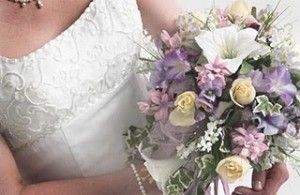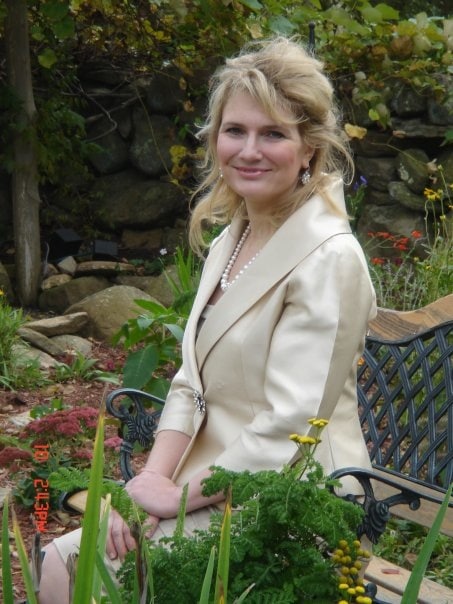In a delightful retro-inspired book I Do! I Do!, Susan Waggoner delightfully provides descriptions of the historical evolution of the traditions of classic Western weddings. Waggoner explains that during the nineteenth century, flowers replaced grasses and herbs carried by brides in the Elizabethan era. The Victorians, who loved plants of all types, used ferns and violets and even indoor trees to decorate the wedding space. They also developed the sprays of flowers that flank the brides and grooms, even today. In contemporary American ceremonies, flowers are used throughout the wedding and reception locations—from rose petals thrown on the aisle as the bride approaches her groom to lavish centerpieces at the reception.
An often overlooked part of this decorative element of the wedding is the wonderful meanings attached to some of our favorite nuptial flowers. These symbolic connections can be gently woven through a bit of the ceremony language, providing another opportunity to subtly personalize the wedding day. Consider some of the “meanings” of just a few popular flowers: daffodil….devotion; lavender….luck; dark pink rose….gratitude; bluebell…..gratitude; orchid….rare beauty; lily….majesty; violet….simplicity; light pink rose….grace; iris….warmth of affection.
Some brides choose favorite flowers or those connected to their birth month. Likewise, many cultures prize certain flowers during wedding celebrations. For example, the Japanese carry white and purple orchids, jasmine, lotus blossoms, and cherry blossoms. Greek brides carry ivy as a sign of eternal love. Czech brides use rosemary, symbolizing fertility and loyalty, in their bouquets. So as your officiant prepares your wedding ceremony, don’t forget to reflect on your flowers as a symbol of your love.


